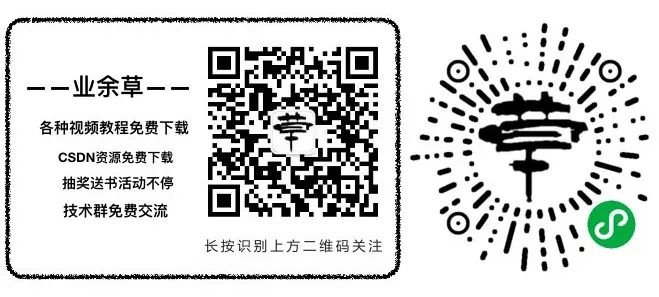本博客日IP超过2000,PV 3000 左右,急需赞助商。
极客时间所有课程通过我的二维码购买后返现24元微信红包,请加博主新的微信号:xttblog2,之前的微信号好友位已满,备注:返现
受密码保护的文章请关注“业余草”公众号,回复关键字“0”获得密码
所有面试题(java、前端、数据库、springboot等)一网打尽,请关注文末小程序

腾讯云】1核2G5M轻量应用服务器50元首年,高性价比,助您轻松上云
ApplicationListener和ContextRefreshedEvent一般都是成对出现的。最近在面试中问到了被面试者对于这两个的用法,面试者大多数被问懵了。可见基础知识的掌握程度。基于此本文将介绍它们的用法。
事件机制作为一种编程机制,在许多语言中都提供了支持。JAVA语言也不例外,java中的事件机制的参与者有3种角色:
- event object
- event source
- event listener
这三个角色的含义字面上很好解,它们就定义了事件机制的一个基本模型。作为一种常用的编程设计机制,许多开源框架的设计中都使用了事件机制。SpringFramework也不例外。
在IOC的容器的启动过程,当所有的bean都已经处理完成之后,spring ioc容器会有一个发布事件的动作。从 AbstractApplicationContext 的源码中就可以看出:
1 2 3 4 5 6 7 8 9 10 11 | protected void finishRefresh() { // Initialize lifecycle processor for this context. initLifecycleProcessor(); // Propagate refresh to lifecycle processor first. getLifecycleProcessor().onRefresh(); // Publish the final event. publishEvent(new ContextRefreshedEvent(this)); // 业余草:www.xttblog.com // Participate in LiveBeansView MBean, if active. LiveBeansView.registerApplicationContext(this);} |
这样,当ioc容器加载处理完相应的bean之后,也给我们提供了一个机会(先有InitializingBean,后有ApplicationListener<ContextRefreshedEvent>),可以去做一些自己想做的事。其实这也就是spring ioc容器给提供的一个扩展的地方。我们可以这样使用这个扩展机制。
1 2 | org.springframework.context.ApplicationEvent org.springframework.context.ApplicationListener |
一个最简单的方式就是,让我们的bean实现ApplicationListener接口,这样当发布事件时,spring的ioc容器就会以容器的实例对象作为事件源类,并从中找到事件的监听者,此时ApplicationListener接口实例中的onApplicationEvent(E event)方法就会被调用,我们的逻辑代码就会写在此处。这样我们的目的就达到了。但这也带来一个思考,有人可能会想,这样的代码我们也可以通过实现spring的InitializingBean接口来实现啊,也会被spring容器去自动调用,但是大家应该想到,如果我们现在想做的事,是必须要等到所有的bean都被处理完成之后再进行,此时InitializingBean接口的实现就不合适了,所以需要深刻理解事件机制的应用场合。
曾经有一位同事利用 ApplicationListener,重复加载了好几次 xml 配置文件。所以基础知识一定要掌握。
下面是一个完整的例子:
1 2 3 4 5 6 7 8 9 10 11 12 13 14 15 16 17 18 19 20 21 22 23 24 25 26 27 28 29 30 31 32 33 34 35 36 | public class ApplicationContextListener implements ApplicationListener<ContextRefreshedEvent> { private static Logger _log = LoggerFactory.getLogger(ApplicationContextListener.class); @Override public void onApplicationEvent(ContextRefreshedEvent contextRefreshedEvent) { // root application context if(null == contextRefreshedEvent.getApplicationContext().getParent()) { _log.debug(">>>>> spring初始化完毕 <<<<<"); // spring初始化完毕后,通过反射调用所有使用BaseService注解的initMapper方法 Map<String, Object> baseServices = contextRefreshedEvent.getApplicationContext().getBeansWithAnnotation(BaseService.class); for(Object service : baseServices.values()) { _log.debug(">>>>> {}.initMapper()", service.getClass().getName()); try { Method initMapper = service.getClass().getMethod("initMapper"); initMapper.invoke(service); } catch (Exception e) { _log.error("初始化BaseService的initMapper方法异常", e); e.printStackTrace(); } } // 系统入口初始化,业余草:www.xttblog.com Map<String, BaseInterface> baseInterfaceBeans = contextRefreshedEvent.getApplicationContext().getBeansOfType(BaseInterface.class); for(Object service : baseInterfaceBeans.values()) { _log.debug(">>>>> {}.init()", service.getClass().getName()); try { Method init = service.getClass().getMethod("init"); init.invoke(service); } catch (Exception e) { _log.error("初始化BaseInterface的init方法异常", e); e.printStackTrace(); } } } }} |
以上就是ApplicationListener和ContextRefreshedEvent的相关用法。

最后,欢迎关注我的个人微信公众号:业余草(yyucao)!可加作者微信号:xttblog2。备注:“1”,添加博主微信拉你进微信群。备注错误不会同意好友申请。再次感谢您的关注!后续有精彩内容会第一时间发给您!原创文章投稿请发送至532009913@qq.com邮箱。商务合作也可添加作者微信进行联系!
本文原文出处:业余草: » 详解Spring中的ApplicationListener和ContextRefreshedEvent
